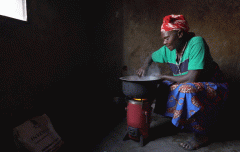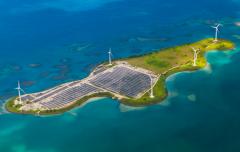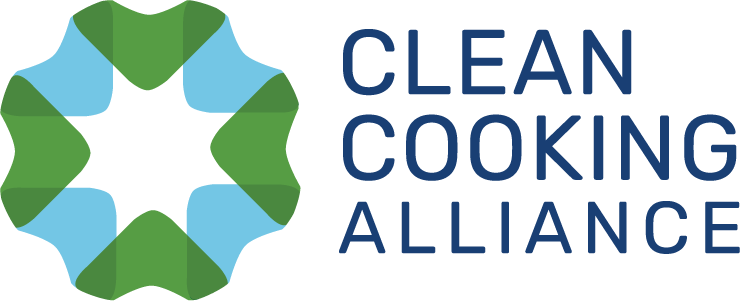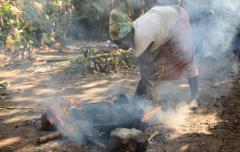Editor's pick: Five actions to end cooking poverty
By: Anne-Marie Biser Kaluz, Deborah Thomas, John Anthony Hodges, Lisa Ghaffari, Nicholas Rossano, Peter Clarence Schott and Zhongmin Guo
This article was submitted to SEforALL by the authors as a summary of their report titled Killed by Breathing: Addressing Cooking Poverty: Current State, Gaps and Challenges, and Proposed Solutions to Achieving SDG7. The report contains the results of a Spring 2021 independent study prepared within the Sustainability Management Program of Columbia University.
Cooking poverty remains one of the largest unsolved public health, climate, and equality crises humans have ever experienced. It kills over four million people annually and affects 3.83 billion people in 71 countries. [1] While the costs of eradication are high, costs of inaction – in terms of health, gender equity, and climate impacts – are even higher. Estimates of the social and environmental cost of this burden reach USD 2.4 trillion per year. [2] Alleviation of cooking poverty received only USD 131 million in 2018 [3], while the estimated cost for achieving improved cooking for all by 2030 is roughly USD 10 billion annually for the next 10 years. [4] In order to reach modern cooking, the price tag is USD 150 billion yearly.
Cooking poverty: Using wood, charcoal, dung or other solid fuels on three-stone fires or low-quality stoves in poorly ventilated conditions; includes individuals in Tiers 0-3 of the five-tier Multi-Tier Framework.
Achieving “affordable, reliable, sustainable, and modern” cooking for all is essential to addressing the greater issue of energy poverty and meeting Sustainable Development Goal 7 (SDG7) in addition to reaching adjacent SDGs aimed at prosperity, gender equity, health, and climate. [5] The cooking poverty sector – a multitude of development organizations, governments, NGOs, and small and medium enterprises – is not on track to reach 2030 Sustainable Development targets. At present the industry’s current emphasis on “success” creates the appearance of progress. That needs to change when, in fact, neither the funding nor the human and institutional infrastructure exist at scale to eradicate cooking poverty in the foreseeable future.
Continuing on the current path will lead to the failure to eradicate cooking poverty, the related failure of SDG7 and the resulting failure of other sustainable development goals.
We believe another path exists. The cooking poverty sector has the opportunity to realign with the electricity access sector’s ecosystem and value chain. Within electrification efforts, an enormous base of experience is available for rapid dissemination; there is accessible infrastructure (e.g., physical, institutional, human resources, investment platforms, etc.) to expedite deployment of necessary resources and sufficient capital to be utilized if certain actions are taken:
Action 1 – rebrand and reframe the issue, using the term “cooking poverty” rather than “clean cooking” or similar terms. As clean or modern cooking services today represent only a fraction of the solution to cooking poverty, the name of the sector should reflect both the unsolved problem and the diversity of solutions to this complex issue (examples include public health, gender empowerment, enterprise development). While modern cooking is the end-goal in eradicating cooking poverty, harm reduction, incrementalism and “leapfrogging” to modern where possible are the means, and each needs attention. Only focusing on modern cooking due to its mortality reduction benefits shortchanges the end-user, stalls investment, and forces communities in need to wait for a leapfrog solution (electrification, high-end fuels) to modern cooking.
Action 2 – execute a moonshot effort to consolidate all presently available knowledge and information into a multipurpose and easy-to access Playbook, which must be accessible to new entrants and existing actors across the public and private sectors as well as civil society. Initiatives within the sector are currently ad hoc, knowledge and information sharing across entities is inconsistent, and best practices are hard to find and build upon. A cooking poverty sector strategy that empowers information sharing and collaboration on industry knowledge and expertise can bridge this gap and accelerate new entrants.
Action 3 – address SDG 7.1.1 and 7.1.2 together rather than in separate silos. Even if the tactical issues across the cooking sector (branding, collaboration, information sharing) are solved, and financial investment somehow reached the scale needed to reach SDG7 in the next nine years, the sector lacks the capacity to support solutions needed for 3.8 billion people - more than half the world’s population - that cook with solid fuels. Merging electrification and cooking efforts will require strong leadership, planning, and incentives.
Action 4 – use these reconstructed energy access initiatives to tap unprecedented amounts of climate finance. There is significant opportunity for a streamlined approach to utilizing carbon markets to finance small businesses and achieve improvements in energy, health, climate, and gender equality goals.
Action 5 – organize a donor/investor/government Compact around the principle of “complete and balanced support for all phases of the transition from cooking poverty to modern cooking.” This should align the largely ad hoc approach to fundraising, technical assistance, and policy creation (though this can still be specialized by technology or fuel).
1. ESMAP.2020. The State of Access to Modern Energy Cooking Services (English). Washington, D.C.: World Bank Group. http://documents.worldbank.org/curated/en/937141600195758792/The-State-of-Access-to-Modern-Energy-Cooking-Services
2. Ibid.
3. “Energizing Finance: Understanding the Landscape 2020.” SEforALL, November 19, 2020. https://www.seforall.org/publications/energizing-finance-understanding-the-landscape-2020.
4. Ibid.
5. “Goal 7 | Department of Economic and Social Affairs.” United Nations. United Nations. https://sdgs.un.org/goals/goal7.
Related content

Opinion
16 Apr 2020

News
19 Nov 2020

Partner

Opinion
09 Jun 2021
